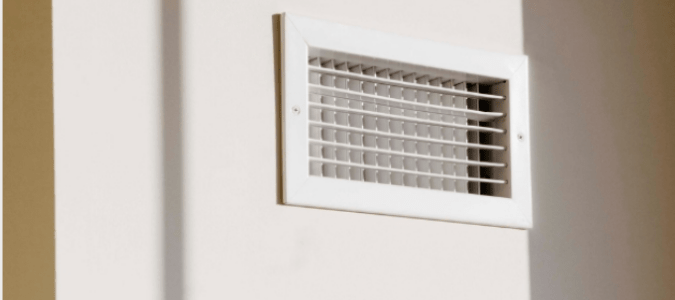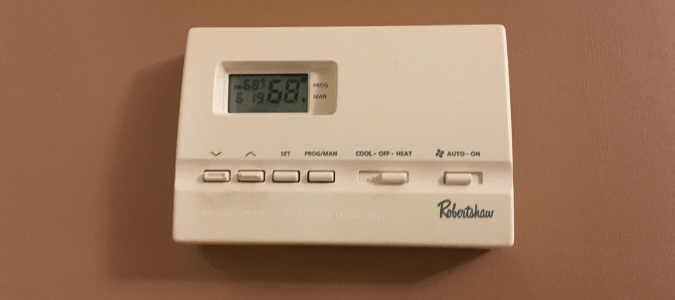
You are pleasantly surprised that after a heatwave, the weather outside is nearly perfect. So, you turn off your air conditioner and head outside to take advantage of a beautiful afternoon. However, after coming back in a few hours later, you realize that your air conditioner is still running, even though you turned it off. While this is arguably a better situation than having an air conditioner that won’t turn on, it’s still wasting energy and money. So, what can you do to turn off your air conditioner? Or is this a problem that requires the help of a professional?
Electrical issues are the most common cause of an AC unit that won’t stop running and these types of problems typically need to be addressed by a licensed heating and cooling specialist. However, before contacting a professional, you can check your fan to make sure this isn’t the problem.
Sometimes, when cleaning or adjusting your thermostat, you can accidentally set your fan setting to ON instead of AUTO. When you do this, it’ll cause your fan to blow air constantly, instead of just blowing air when the air conditioner is on. If this is your problem, all you have to do it switch your fan from ON back to AUTO.
If this isn’t the case, you likely have either a welded contactor, a short in your wiring or a failing thermostat. Now, let’s go into a bit more detail about each of these scenarios.
Your Contactor Has Welded Together
A contactor is a small device that controls the flow of electricity into your air conditioner’s components, including the compressor and condenser. When an air conditioner is not in a cooling cycle, the contactor blocks the flow of electricity to the unit. When your unit enters the cooling cycle, the contactor will once again let the electricity flow until the thermostat is satisfied with the temperature of the home.
If you’re not keeping up with regular air conditioner maintenance or if your system is getting older, your contactor may get stuck and continue to send electricity to your air conditioner’s parts, which prevents your air conditioner from turning off. It’s also not uncommon for bugs to get into your air conditioning system and cause your contactor to malfunction.
Diagnosing and repairing this problem takes extensive knowledge and training, so you’ll need to contact a licensed professional.
There’s a Short in Your Wiring
If your AC system short circuits, it won’t be able to communicate with your thermostat. Therefore, any signals that you are trying to send from thermostat won’t be passed along to your air conditioning unit and it will continue to run. This kind of issue will also need to be addressed by a heating and cooling specialist, as dealing with electricity is dangerous.
Your Thermostat Is Old
While a defective thermostat is not as common as an electrical problem, like any electro-mechanical device, thermostats can fail. On average, a thermometer lasts about 10 years. After a decade, they may start to malfunction due to age, wiring or dust accumulation. Thermostats do not typically go out while an air conditioner is set to the ON position, but it could happen, and it could explain why an air conditioner fan keeps running even if the unit is turned off.
Even if your thermostat is relatively new, you could be having other thermostat problems.

Why Do I Have a Malfunctioning Thermostat?
Aside from having an air conditioner that simply won’t turn off, other signs that indicate your thermostat is malfunctioning include a thermostat display that is unresponsive or unlit, a unit that won’t turn on and a discrepancy between your room temperature and the temperature on the thermostat. If your thermostat is malfunctioning, there are a few things you can try before calling in a professional:
- Replace the batteries (for electronic thermostats). If you have a digital thermostat, try replacing the batteries to see if that fixes the problem. You should replace the batteries in your digital thermostat every year.
- Clean the thermostat (for mechanical thermostats). If your thermostat has a manual lever that adjusts the temperature, you have a mechanical thermostat. Over time, this type of thermostat can start to malfunction because of dust accumulation. Take off the thermostat cover and dust the inside with a small brush or cloth.
- Check the wires. Remove the thermostat cover and do a visual check to make sure the wires are all firmly connected to their respective mounting screw. If one or more of your wires are disconnected, reach out to a heating and cooling specialist to get everything working properly again.
If you’ve completed the steps above and your thermostat is still not working, you likely have one of the following problems.
Your Thermostat Is Not Level
If you have a newer thermostat that uses an electrical temperature sensor, this wouldn’t be an issue with your thermostat. However, most older thermostats have a mechanical switch which is either a bimetallic strip with mercury or a magnetic switch. With a mercury switch thermostat, the bimetallic strip is typically wound into either a loop or a spiral and as the temperature in your home gets cooler or warmer, the strip expands or contracts which then tilts a glass bulb that is filled with mercury. Depending on where the mercury is inside the tube, it will either open or close the circuit.
However, if your thermostat isn’t level it could affect the way the mercury bulb is tilted. You can check to see if this is your problem by simply pulling out a level and placing it on your thermostat. Whether or not your mercury switch thermostat is level, you may want to consider having it replaced. These types of thermostats haven’t been available for purchase for some time, so you’ll likely need to have it replaced sooner rather than later.
Your Thermostat Is in a Bad Location
The placement of your thermostat is very important for its functionality. Thermostats should be installed in parts of the home that aren’t affected by drastic temperature changes. For example, thermostats installed near doors that are opened frequently can catch drafts and misinterpret the temperature of your home, thinking it’s much cooler than it actually is. On the other hand, thermostats installed across from windows that get plenty of sunlight or near kitchens may have a higher temperature reading than the actual temperature of your home.
If you’re getting a new thermostat installed, your specialist will likely put it in a commonly used room on an interior wall. If you’re getting a smart thermostat, you’ll also want to make sure it is installed in a room with a great WiFi connection.
Your Thermostat Temperature Sensors Are Bad
If your thermostat can’t correctly determine the temperature in your home, your air conditioning unit will not work as it should. Typically, if these sensors start malfunctioning, you need to have a new thermostat installed. However, before you start shopping for a new thermostat, you can try recalibrating your thermostat, which you can do yourself or ask a professional to do for you.
Another frustrating air conditioner problem is when your unit won’t cool your home to your desired temperature. Let’s explore that issue and what you can do to keep your home more comfortable.

Why Is My Air Conditioner Not Cooling My House Below 80 Degrees?
Another common problem homeowners come across is when their air conditioning unit just won’t cool their home below 80 degrees. This typically happens because of:
- A dirty air filter
- A dirty blower motor
- A dirty evaporator coil or condenser coil
- Low refrigerant
- A leaky duct system
- An undersized AC unit
While some of these problems require professional assistance, there are some reasons this might be happening, some of which you can resolve on your own and others which you are better off having heating and cooling specialist address.
Dirty Air Filters
The simplest and most effective way to keep your air conditioner running smoothly is to change the filter once a month. By regularly changing the filter, you reduce a lot of the burden on the system. A dirty or clogged filter makes your air conditioner work much harder. Changing the filters can help lower your unit’s energy consumption between 5 to 15 percent and extend the life of your air conditioning unit.
Dirty Condenser Coils
To keep your air conditioner working in optimal condition, make sure the coils and fins on the outside of your air conditioning unit are kept clean and clear of leaves and other debris. If obstructions are present, your air conditioner will work harder than it should. You can clean your unit with a regular garden hose and a broom. Do not use a pressure washer as the strong spray could harm your system.
Obstructed Condenser Unit
The part of your air conditioning system which is outside should have 8 to 12 inches of clearance from shrubs and brush. If the condenser is obstructed, then it can’t efficiently transfer heat out of your system.
Poor Airflow
Make sure all doors and windows are properly sealed to help keep your home cool. Perform a visual inspection of your ductwork to be sure it is sealed correctly. If the ductwork is not properly sealed, cool air will escape before getting into your home.
Many air conditioning problems, including AC units that freeze up, happen because homeowners don’t properly maintain their systems, or don’t realize what’s really involved. To ensure that your air conditioner runs effectively year-round, it is important to schedule a tune-up with an air conditioning professional twice a year—once in the spring before peak cooling season and once in the fall before you’ll be using your heater regularly. Routine preventative maintenance will help you avoid having an electrical part go out at the least convenient time, as a trained heating and cooling technician can often detect and address most small problems before they become major ones. A typical tune-up will include various tests to ensure your unit’s internal parts are functioning correctly, as well as a filter check and a refrigerant charge, if needed. Your technician will likely also clear the condensate drain and clean your unit inside and out.
ABC Can Repair and Maintain Your Air Conditioner
There’s nothing quite as frustrating as having problems with your air conditioner because when something goes wrong it can quickly put you in an uncomfortable (and sometimes costly) bind. In addition, trying to resolve these problems on your own can put you at risk of a more serious issue and can even be dangerous, since some repairs require working with your electrical system. Instead of dealing with the risk and hassle, contact the licensed professionals at ABC Home & Commercial Services. Our specialists go through extensive training and are available 24/7, so you can rely on us to get the job done right and quickly make your home feel comfortable again.
